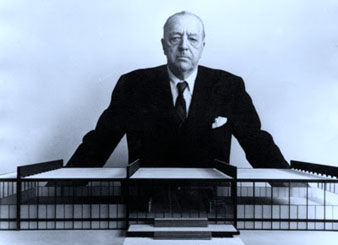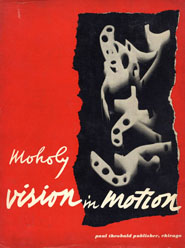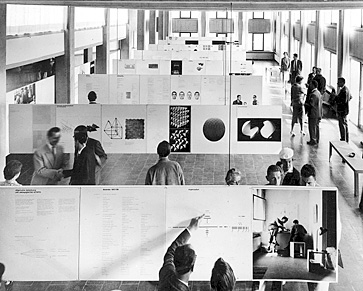| Design Schools After the Bauhaus | |||
|
 3 3 |
||
| The Ulm Design School / Hochschule fˆºr Gestaltung After the war a new German design school, HfG, was founded in Ulm, based on some of the tenants of the Bauhaus. The school was the initiative of The Scholl Foundation (1950), founded in memory of Sophie and Hans Scholl, members of the resistance group "White Rose" who were executed in 1943 by the Nazis.
The project was funded through the influx of a million marks by John McCloy of the American High Command for Germany in the post-war governing structure. Through contacts with Max Bill and Walter Gropius, the Foundation also received financial support from the German Federal Financial Directorship and from the European Aid to Europe as well as private contributions. |
The curriculum lasted 4 years. The first year was devoted to the basic design course (Vorkurs) that was intended to offset the deficit in primary and secondary education in terms of creative project activity. The second and third years were for elective specialization: Product Design, Industrialized Building, Visual Communication and Information, with Filmmaking being added later. The last year of study was intended for thesis. The plan was subject to investigations that were made in regard to new approaches to design and which were then implemented in each department of the specialties. The Ulm Design School operated from 1953–1968.1 |
Black Mountain College An experimental school in the remote area of the Appalachian mountains in the US would develop into an American Bauhaus. "The arts were Black Mountain College's defining legacy. Much like Walter Gropius' Bauhaus program (a curriculum of drawing, crafts, academic theory, theatre, music and dance), the arts played a central role in Black Mountain College's academic curriculum. The College organized its students into junior and senior divisions of self-directed study that functioned much like the Bauhaus' hierarchy of apprentices, journeymen, and junior masters. Throughout its existence, Black Mountain College was conscious of the German Bauhaus' legacy and maintained ties with several refugee Bauhaus masters. 2 |
Lawrence Kocher's building design for Black Mountain College. In 1950, Albers left Black Mountain to head the Department of Design at Yale University in New Haven, Connecticut. While at Yale, Albers worked to expand the nascent graphic design program (then called "graphic arts"), hiring designers Alvin Eisenman, Herbert Matter and Alvin Lustig. Albers retired from teaching in 1958 |
 |
 5 |
||
Illinois Institute of Design IIT was founded in 1937 in Chicago by László Moholy-Nagy, a former Bauhaus teacher at the invitation of Chicago's Association of Art and Industry. Moholy-Nagy moved to Chicago in 1937 and named the school The New Bauhaus. The philosophy of the school was basically unchanged from that of the original ... Due to financial problems the school briefly closed in 1938. However, Walter Paepcke, Chairman of the Container Corporation of America and an early champion of industrial design in America, soon offered his personal support, and in 1939, Moholy-Nagy re-opened the school as the Chicago School of Design. In 1944, this became the Institute of Design, and in 1949 it became part of the new Illinois Institute of Technology university system and also the first institution in the United States to offer a PhD in design 4 |
Ludwig Mies van der Rohe (1886-1969) was a former head of the Bauhaus. "Mies came to Illinois Institute of Technology to head the university's Department of Architecture soon after the closing of Bauhaus, the renowned design school that flourished in Germany from 1919 until the rise of Nazism in 1933. During his 20 years as chairman of the department (1938-58), he established a curriculum based on the Bauhaus philosophy of synthesizing aesthetics and technology. His emphasis on a strong grounding in the fundamentals of architecture and on a disciplined method of problem solving is reflected in IIT's curriculum today."6 Above, Mies with his model for Crown Hall, the school of architecture at IIT. The column-free open plan of the main floor of Crown Hall demonstrates Mies' innovative concept of creating universal space that can be infinitely adapted to changing use. |
Moholy authored an account of his efforts to develop the curriculum of the School of Design in his book Vision in Motion. (An extension of his previous book, The New Vision). |
|
| Footnotes | |||
|
2
|
3 4 5 |
||

